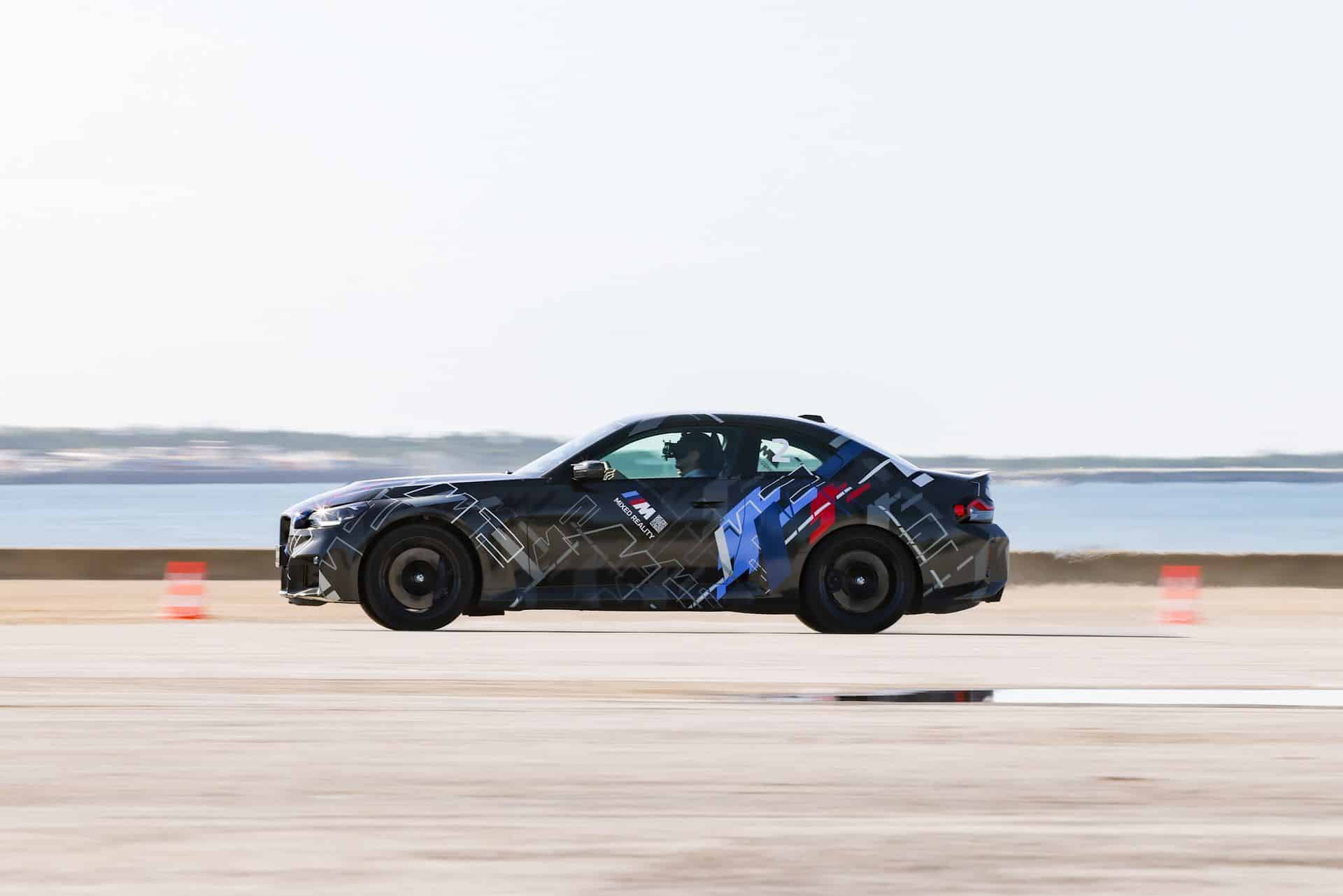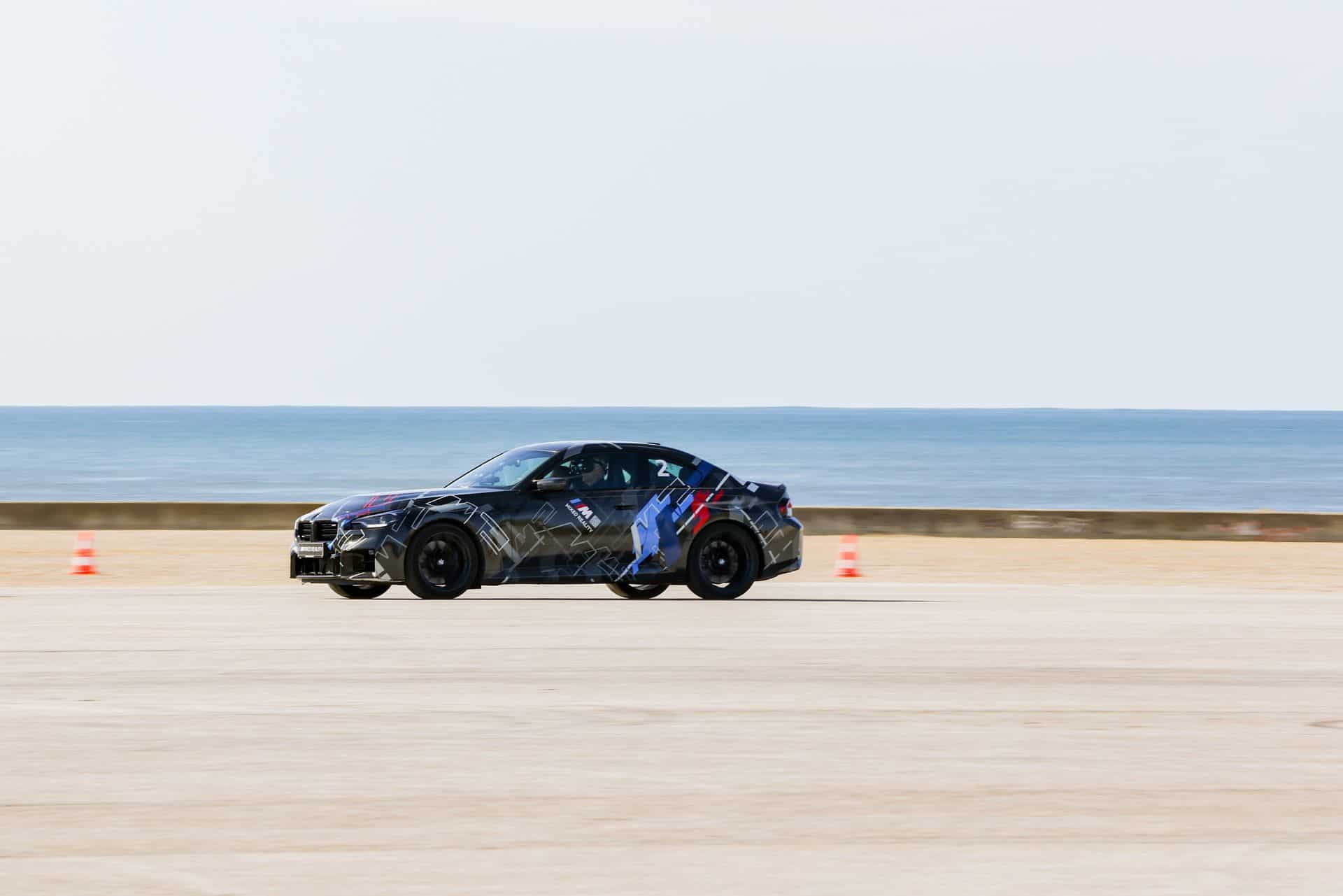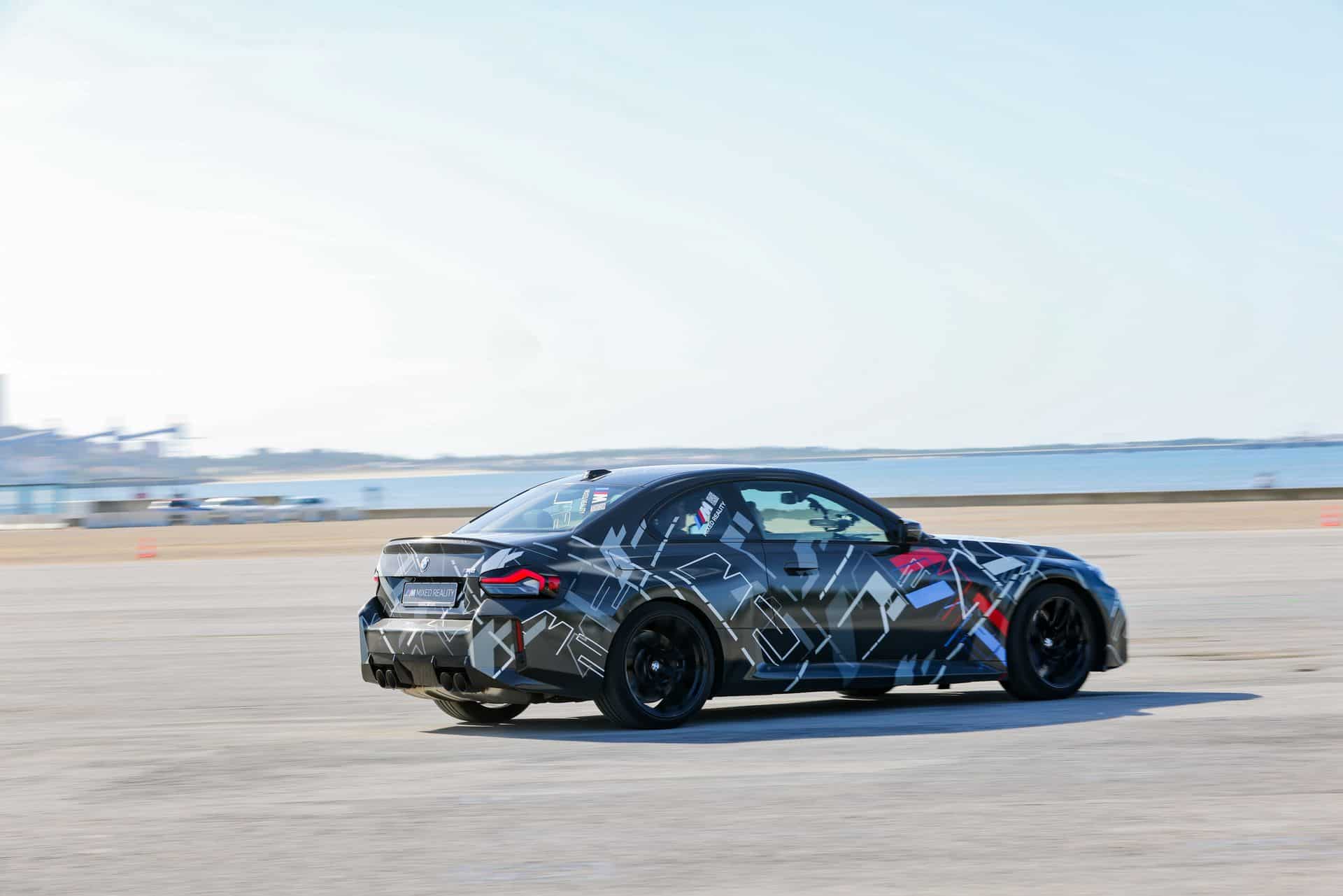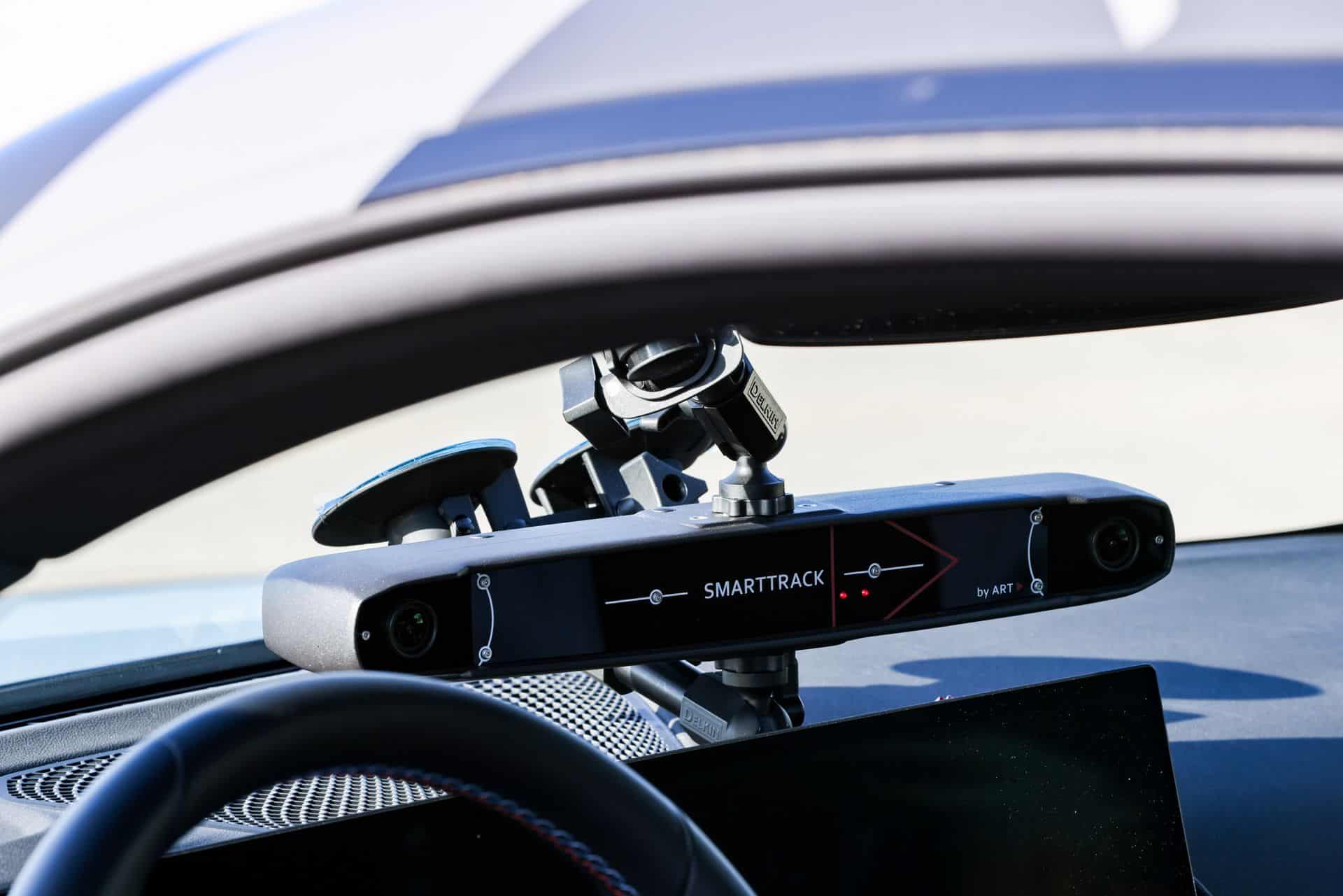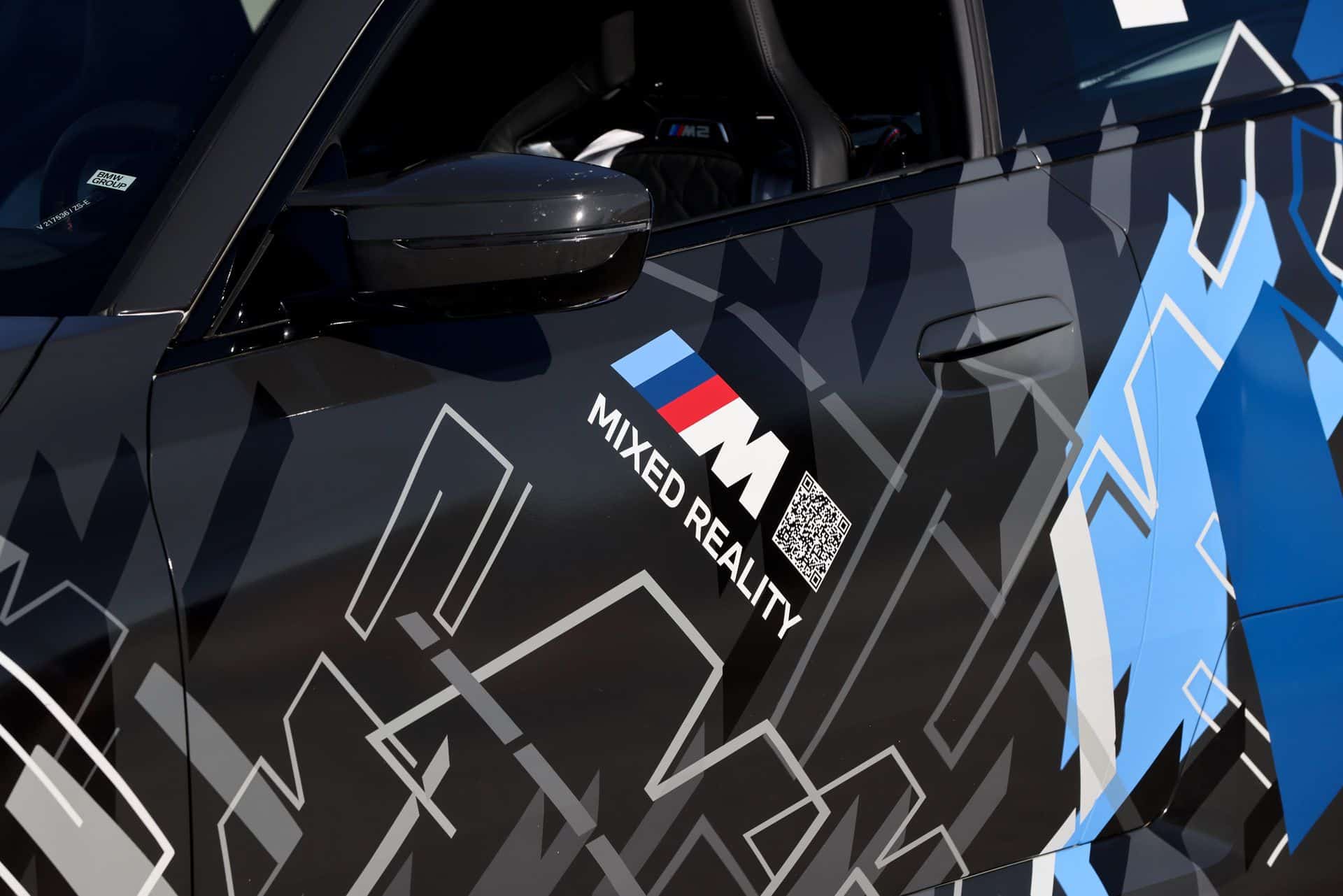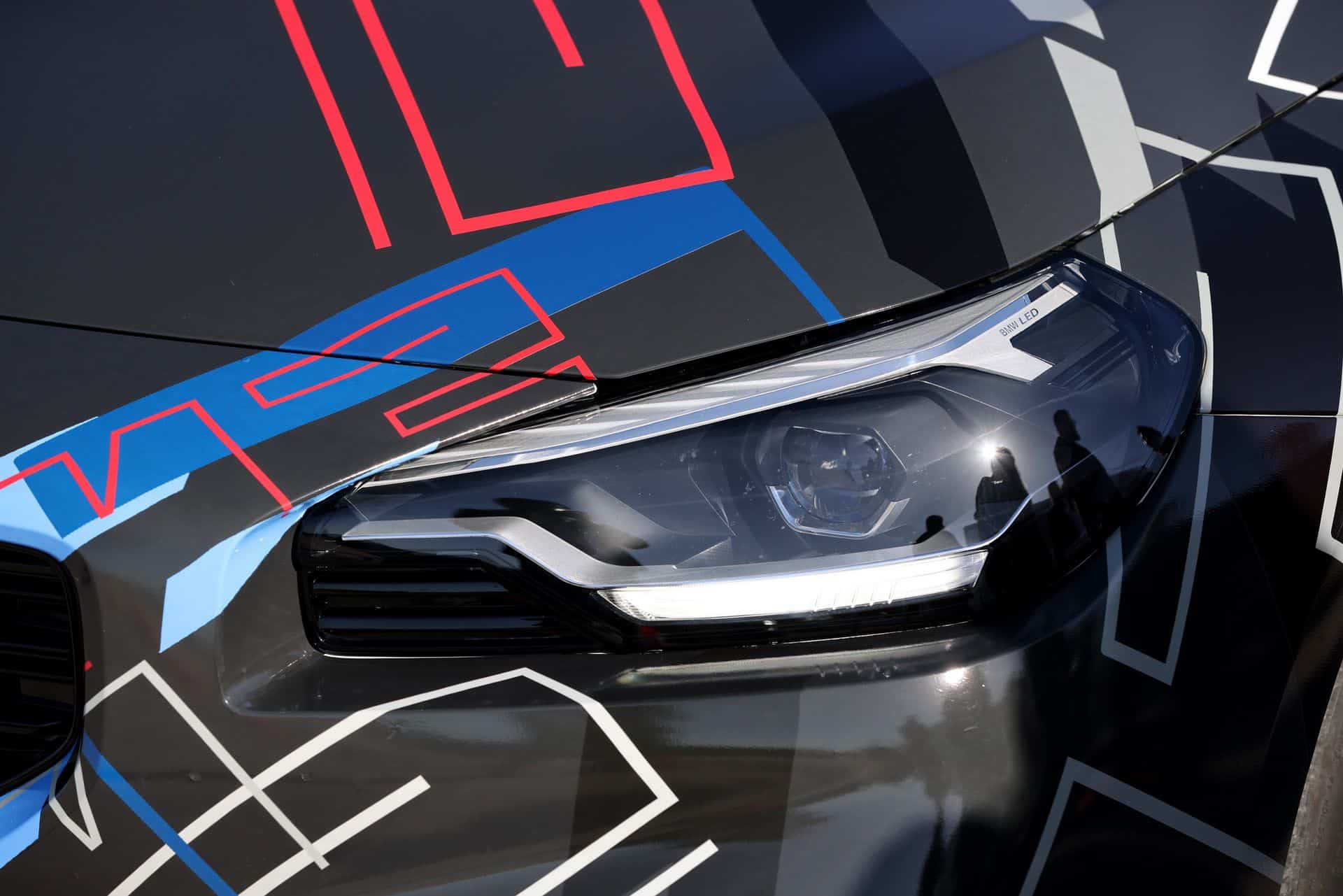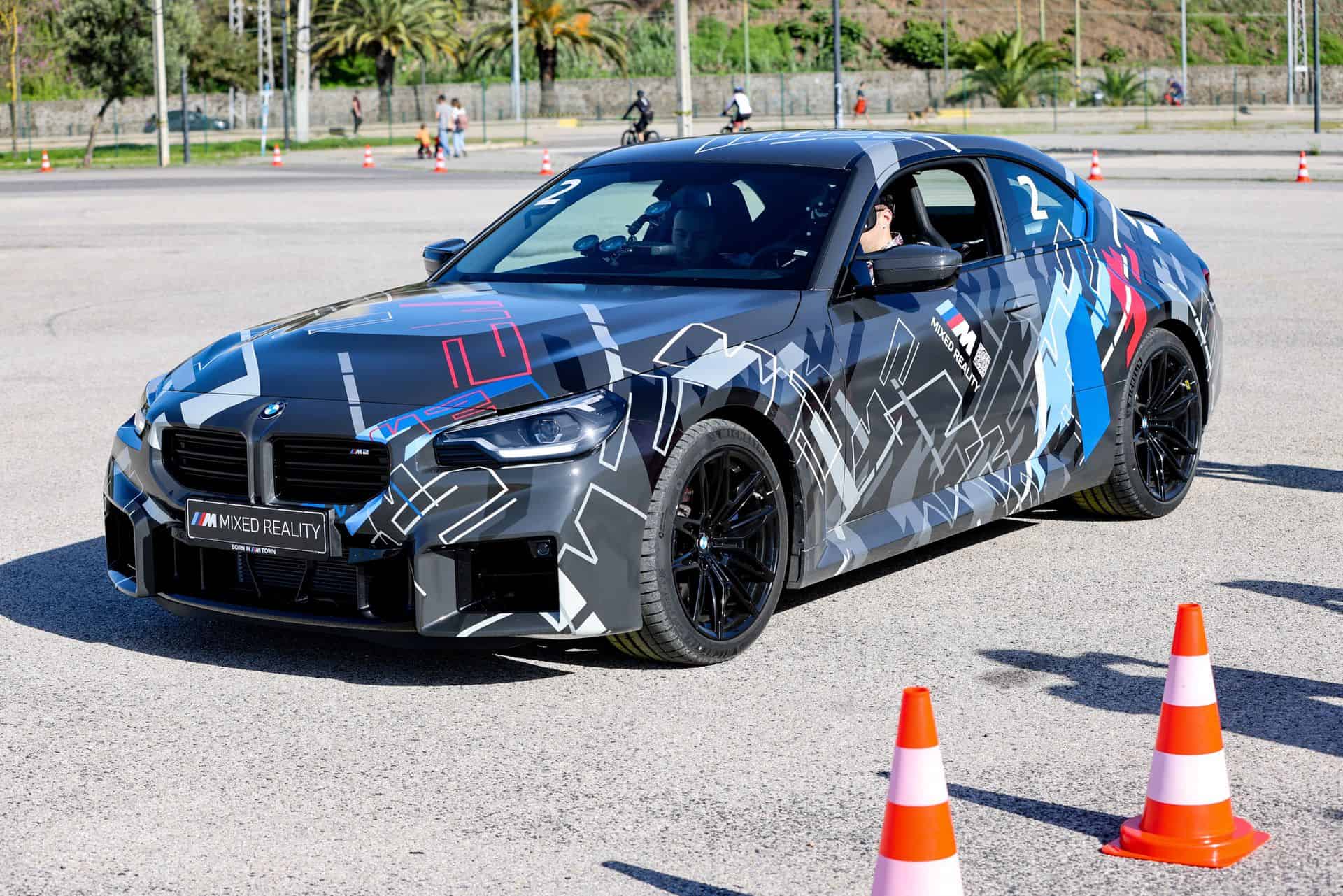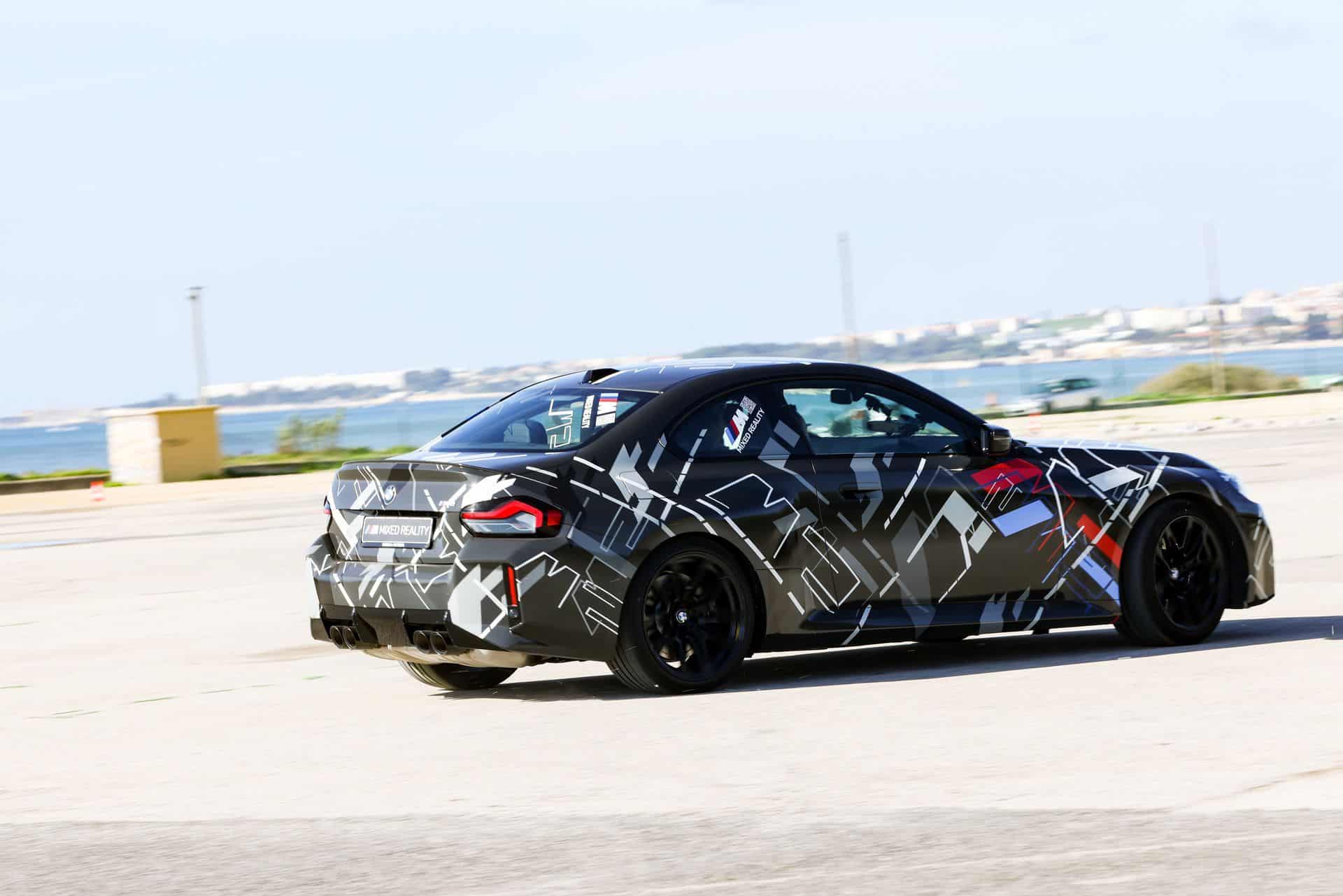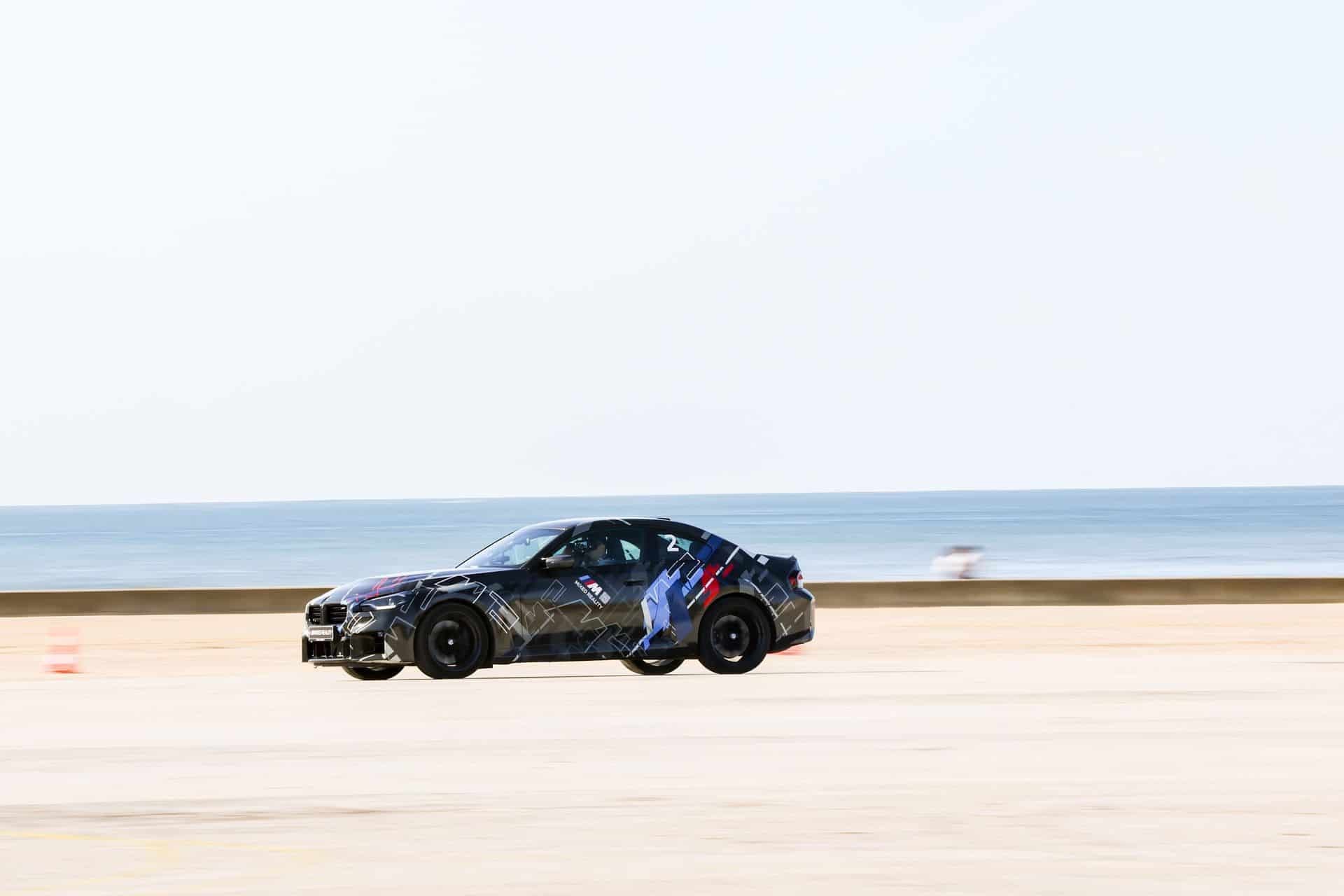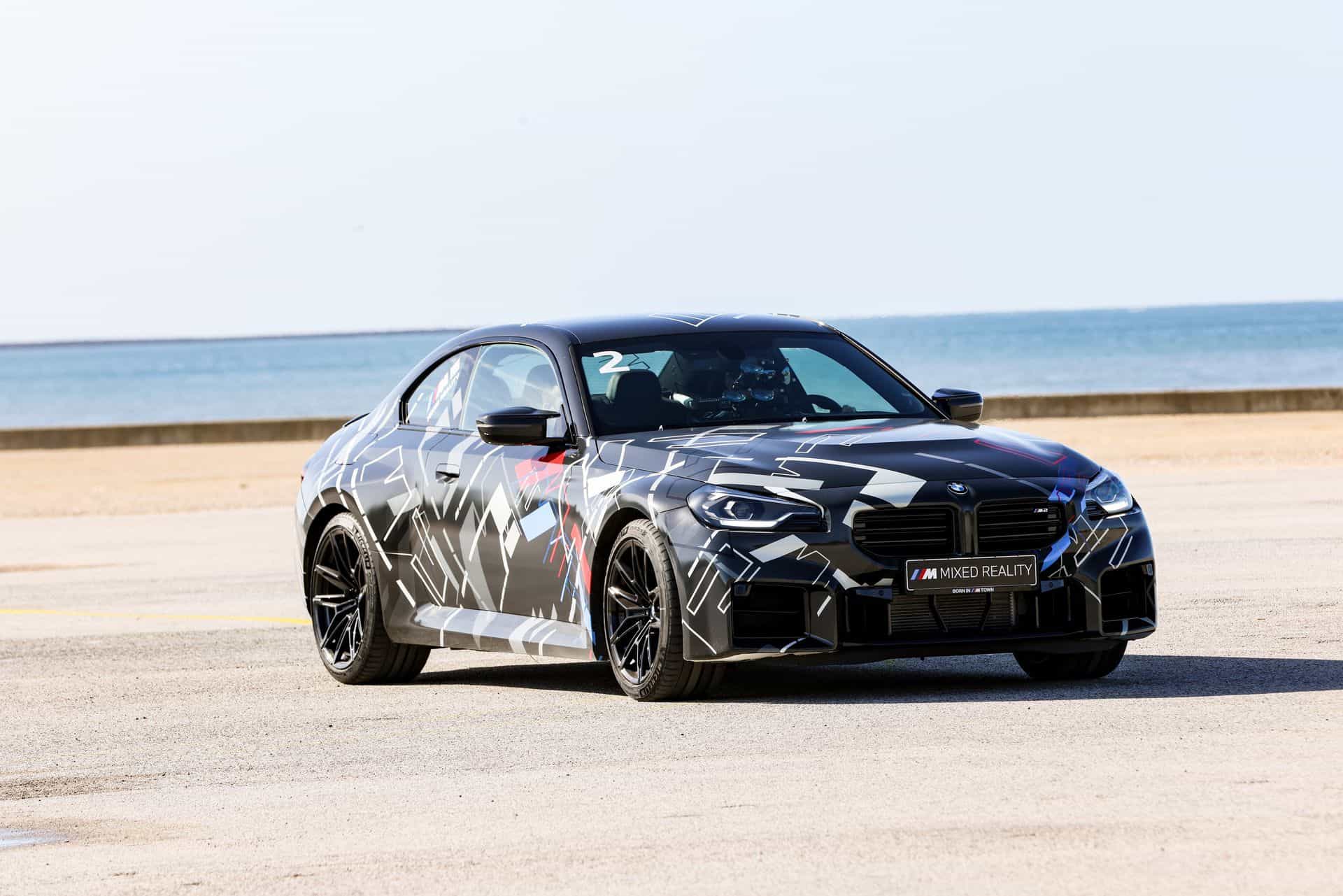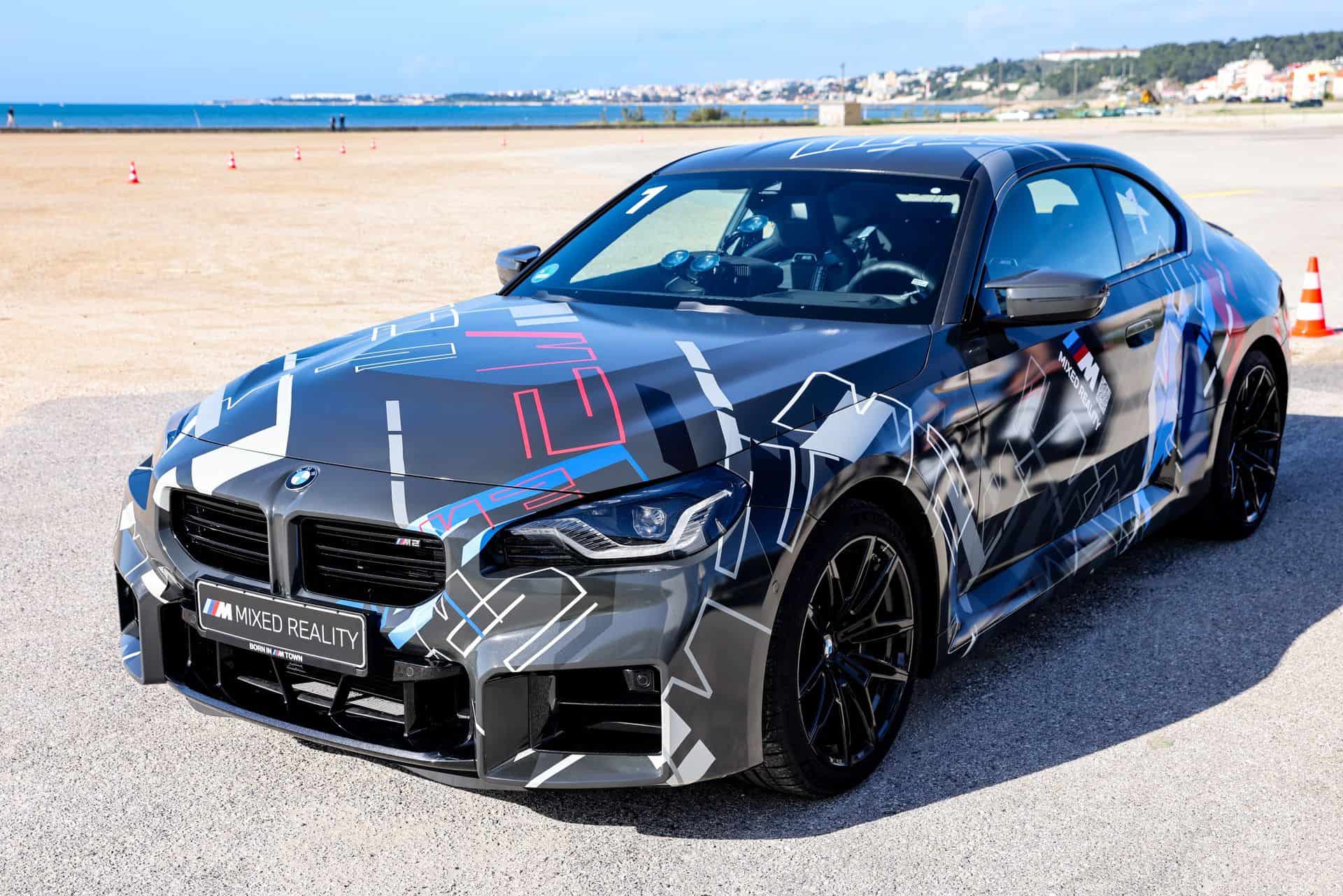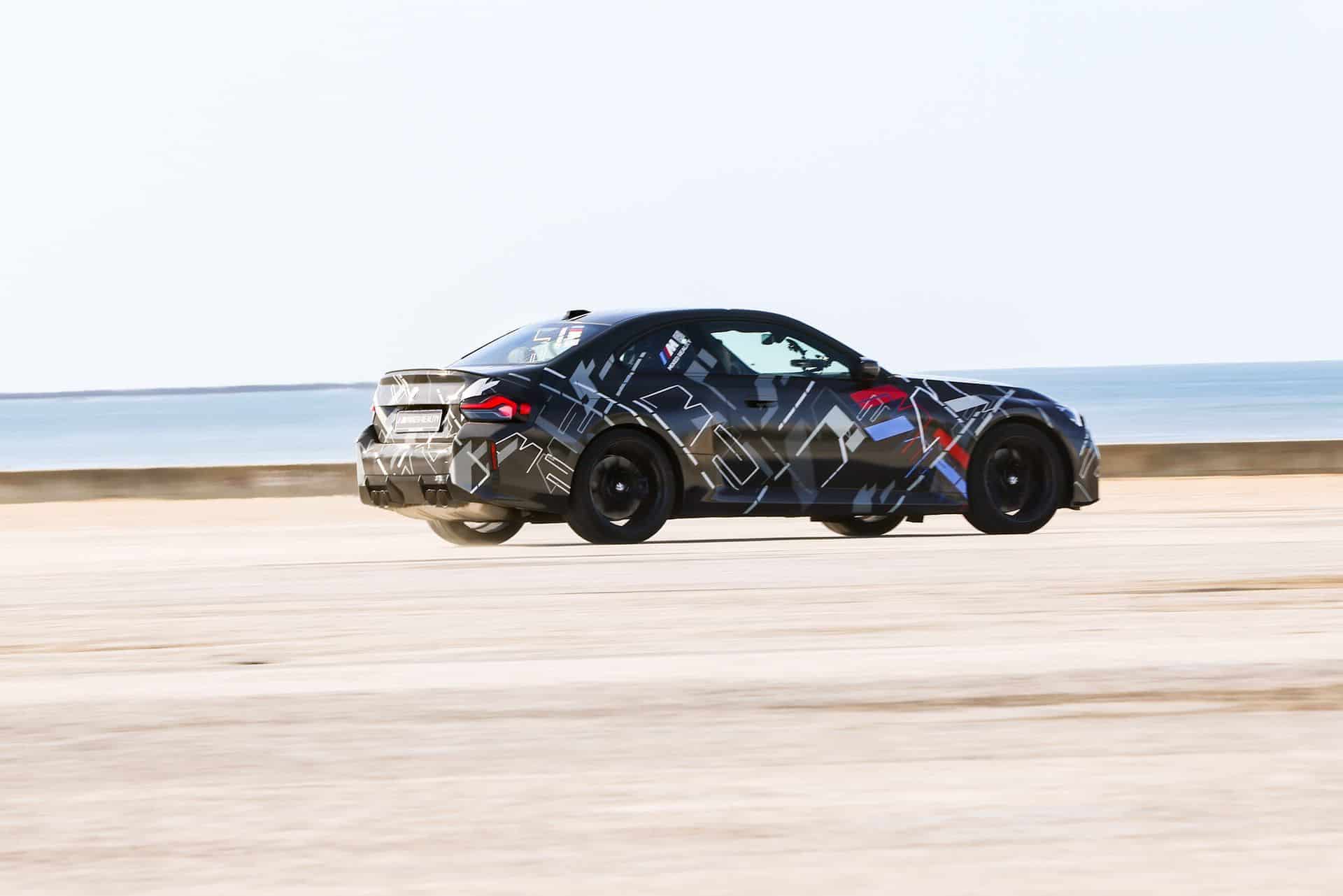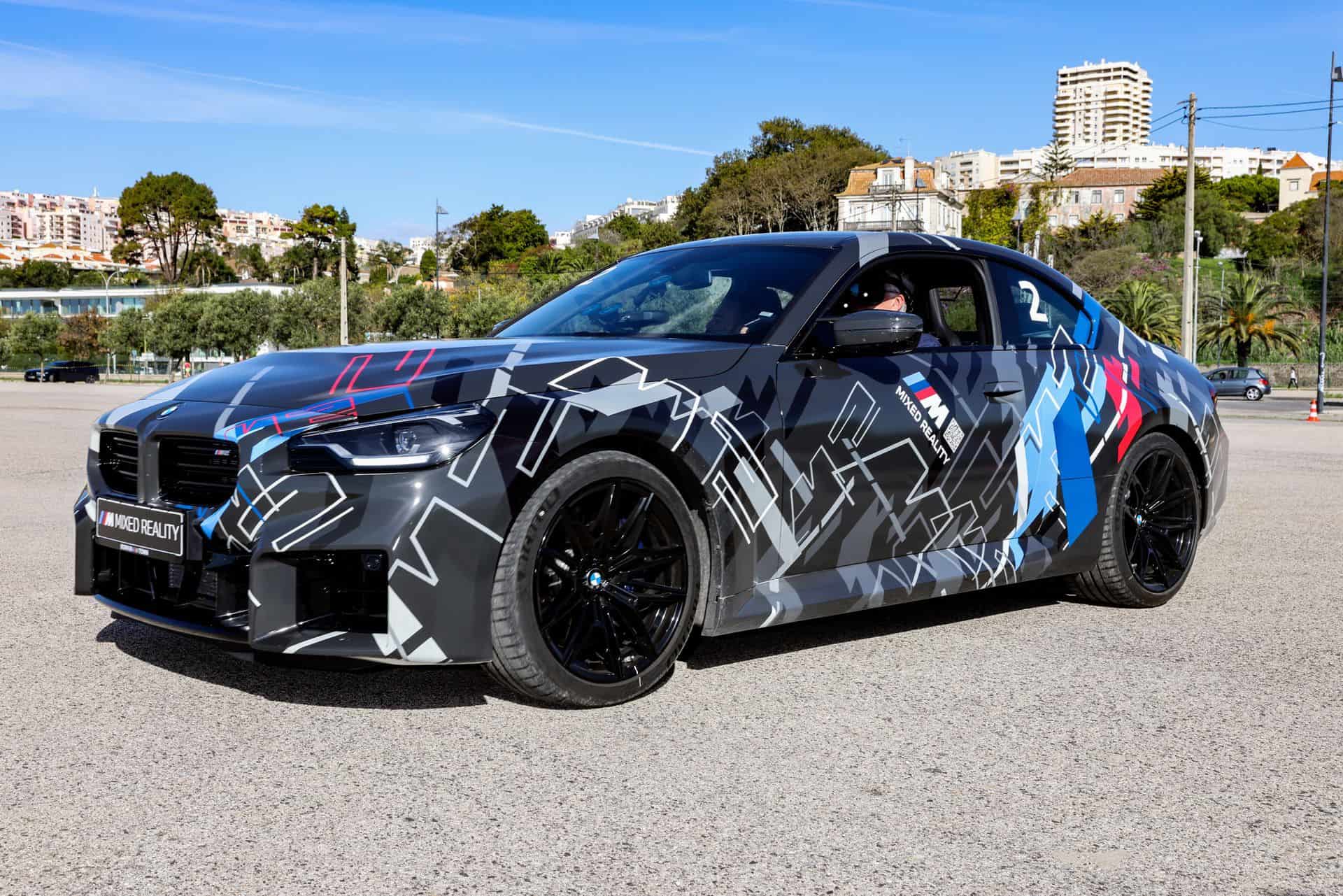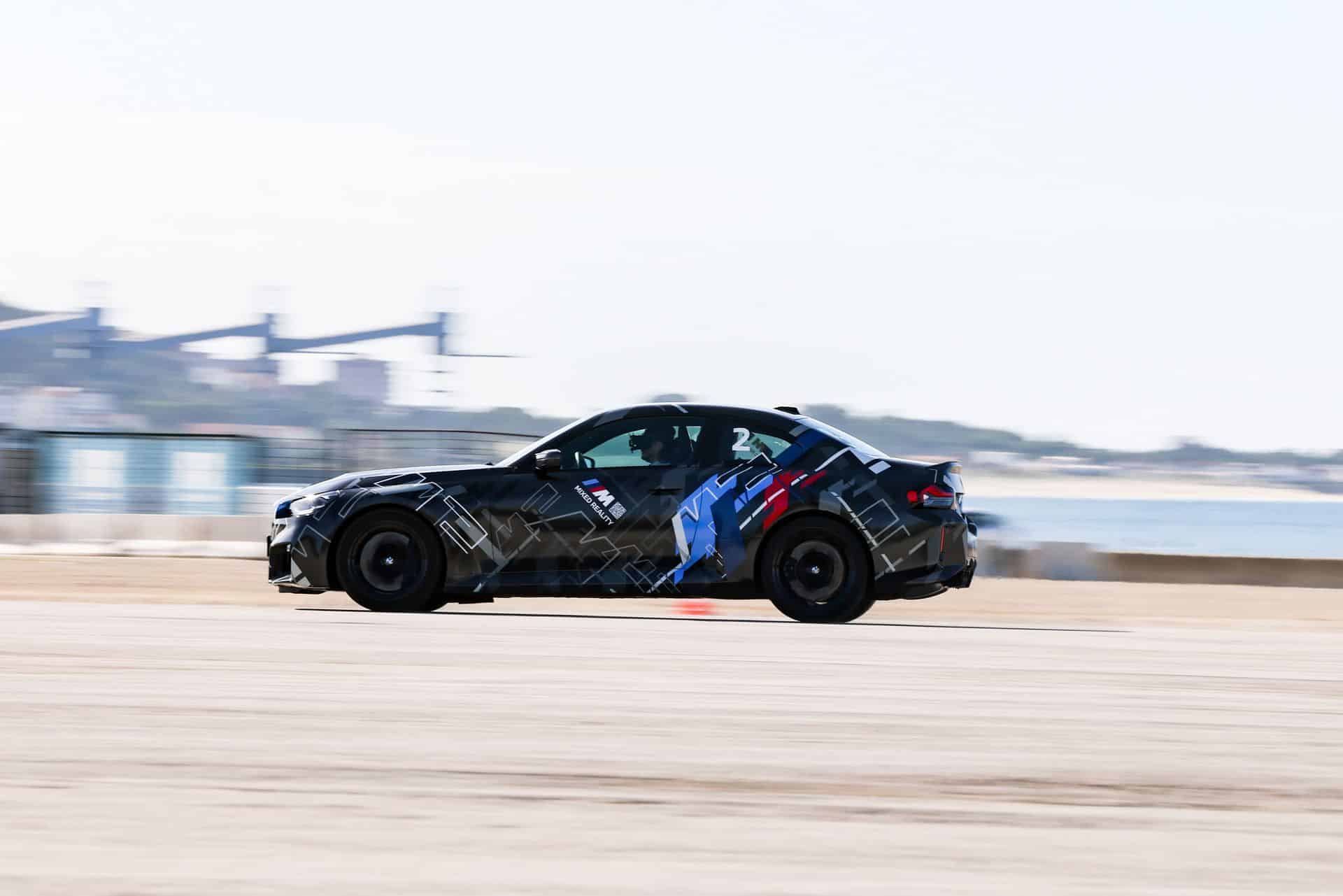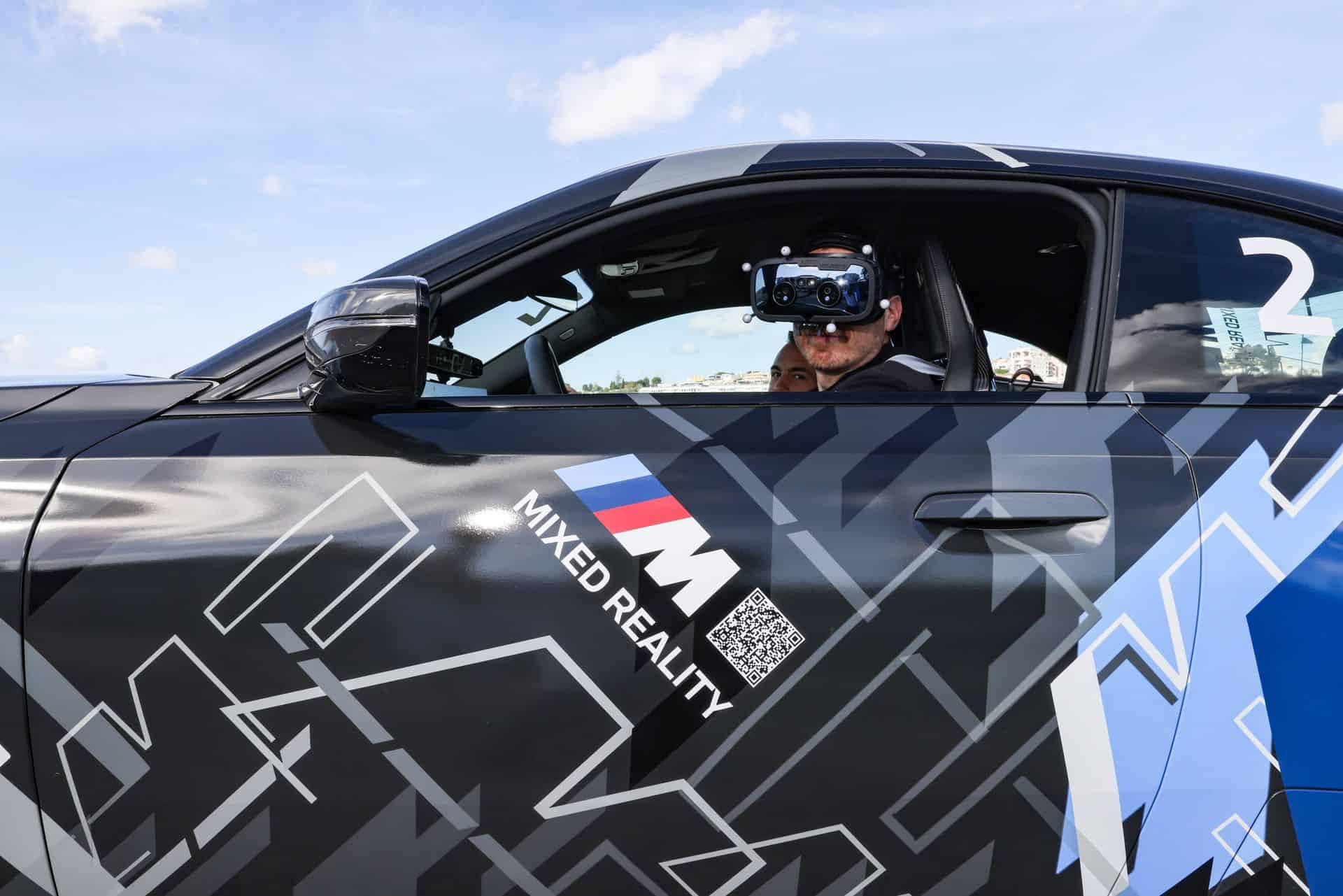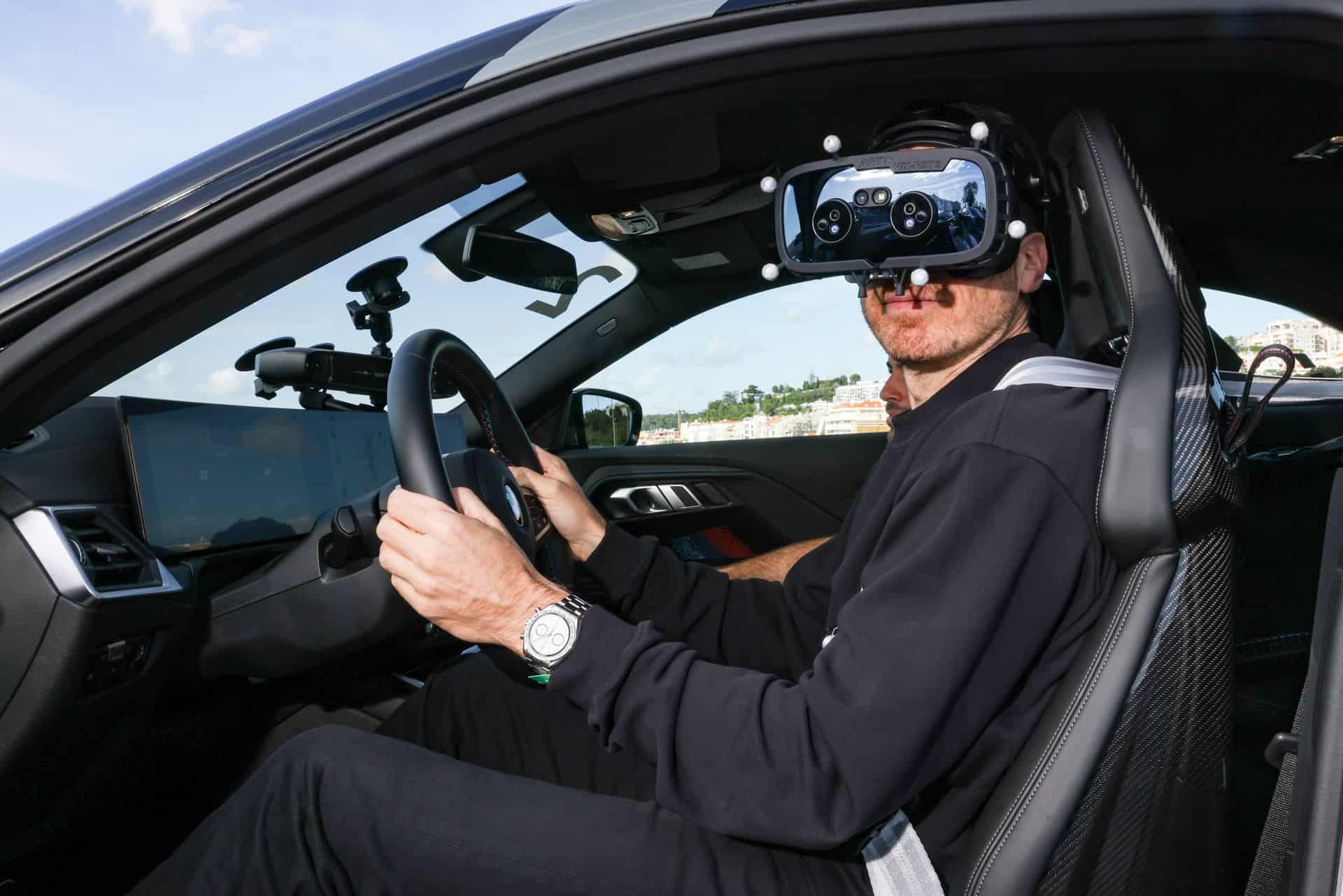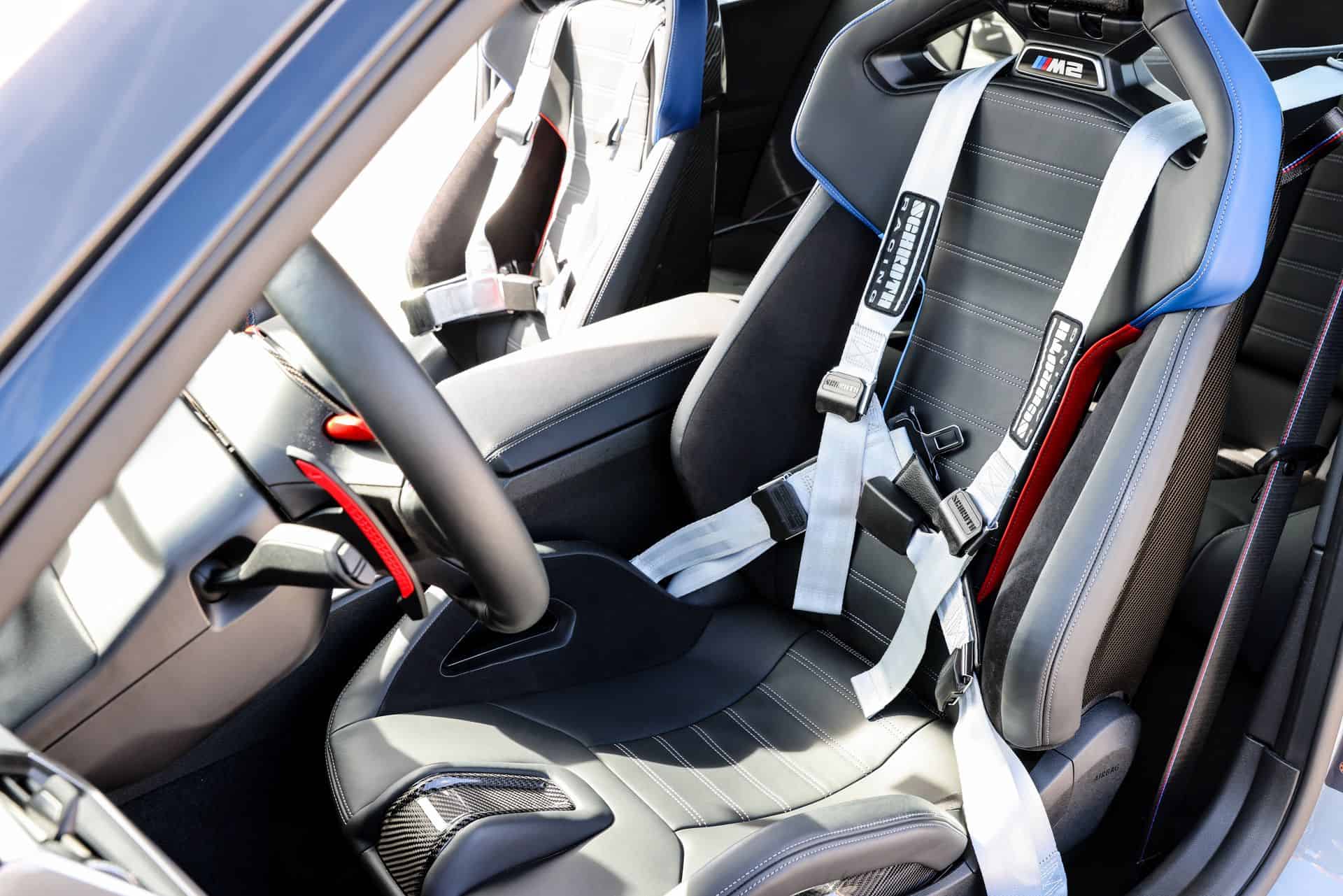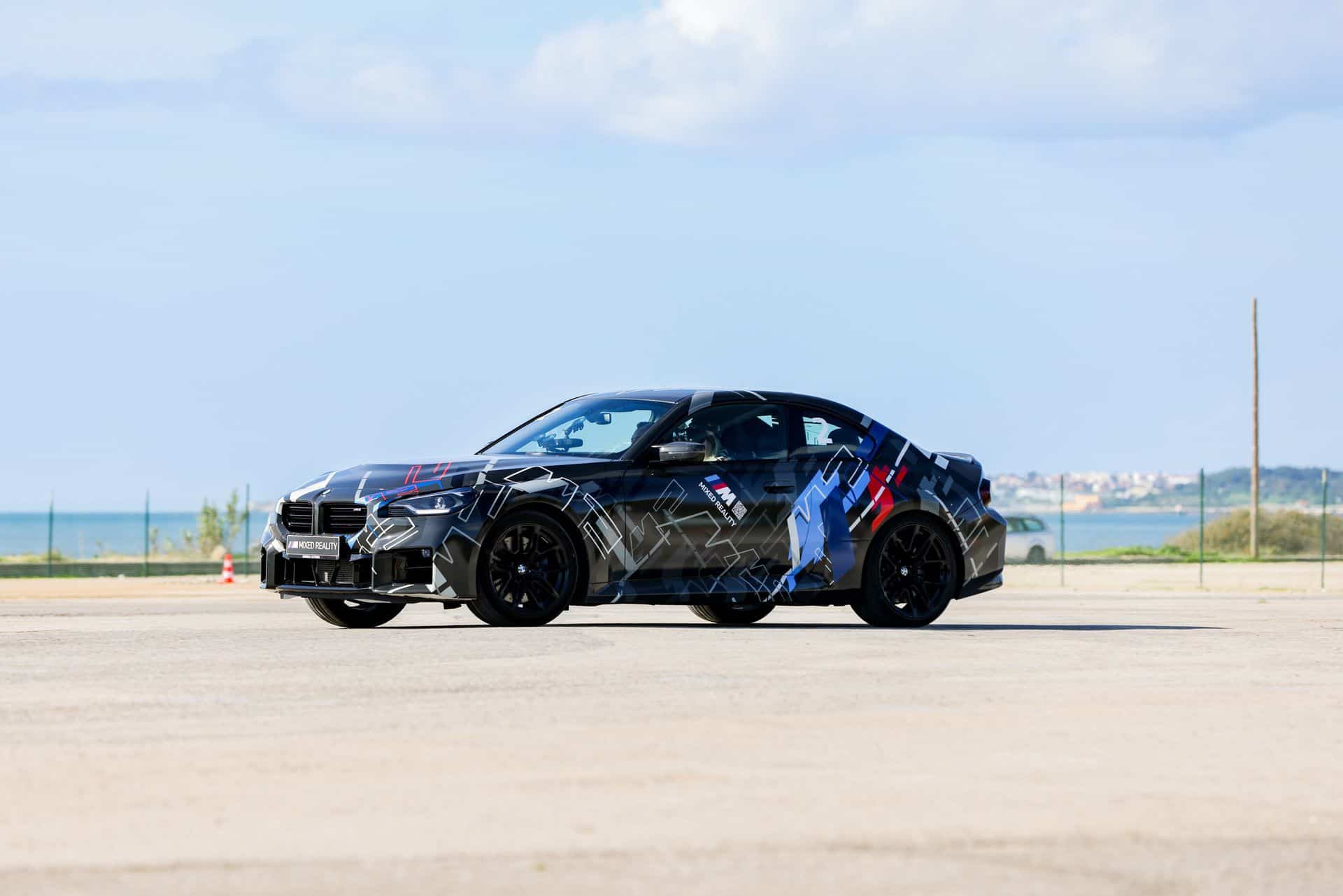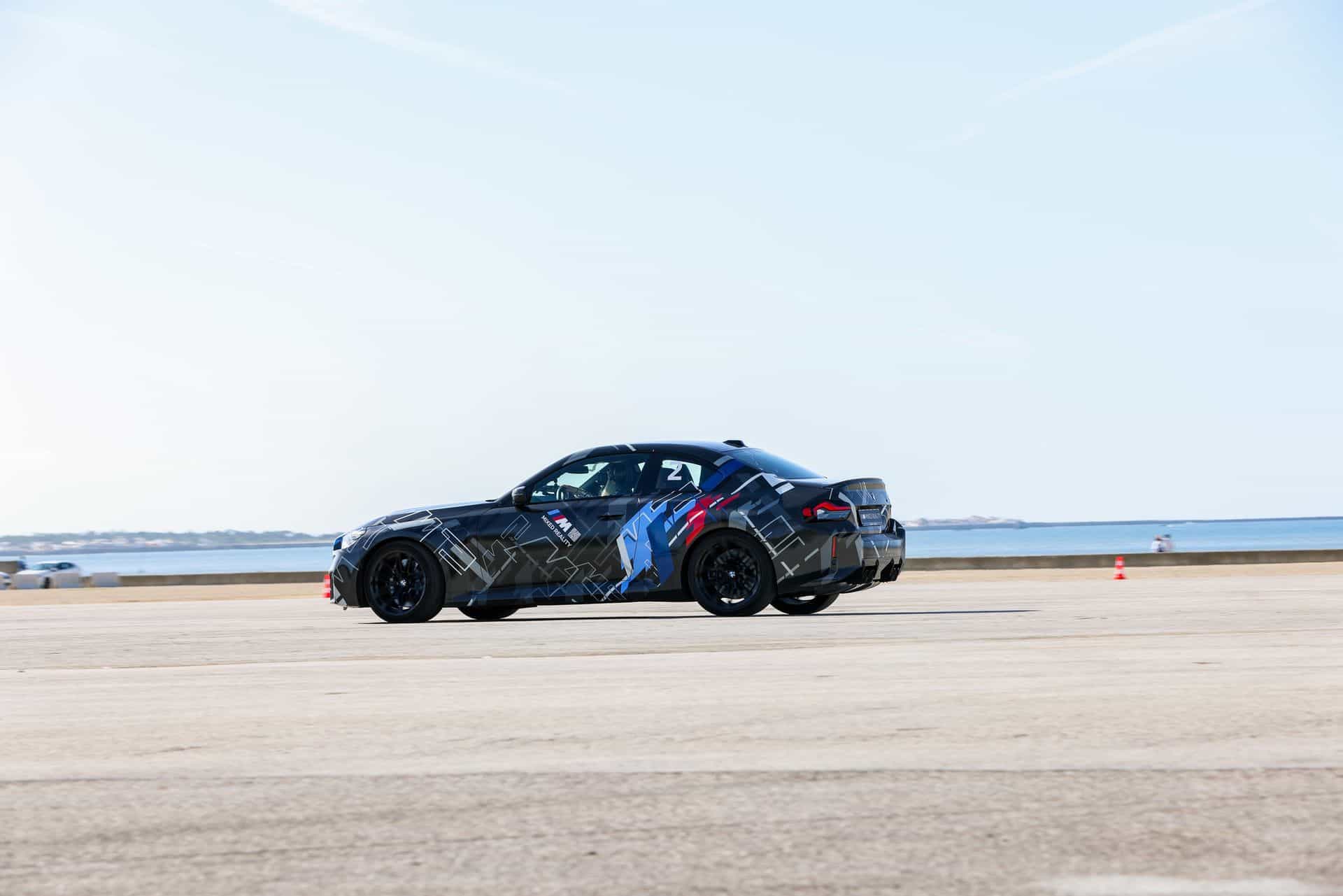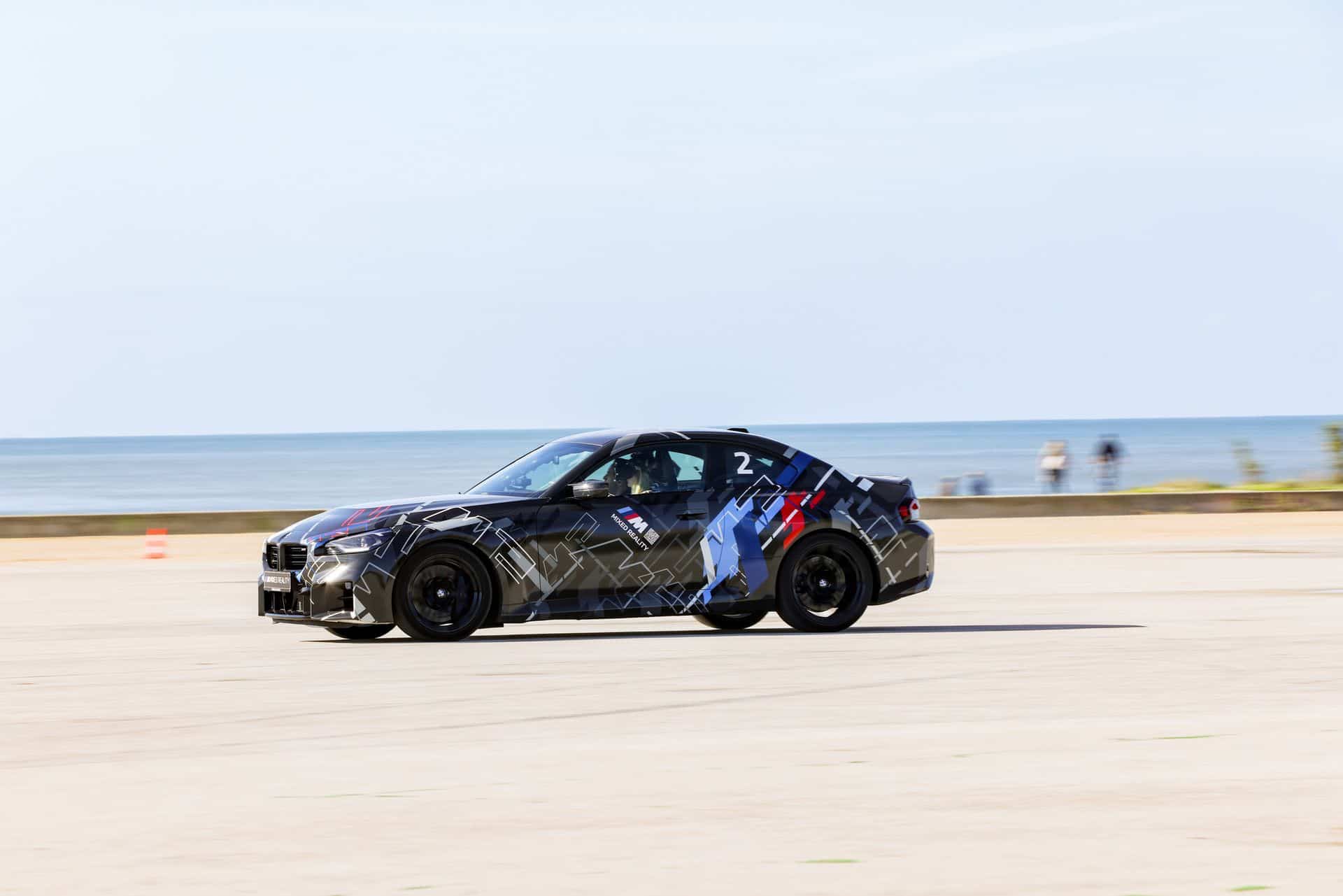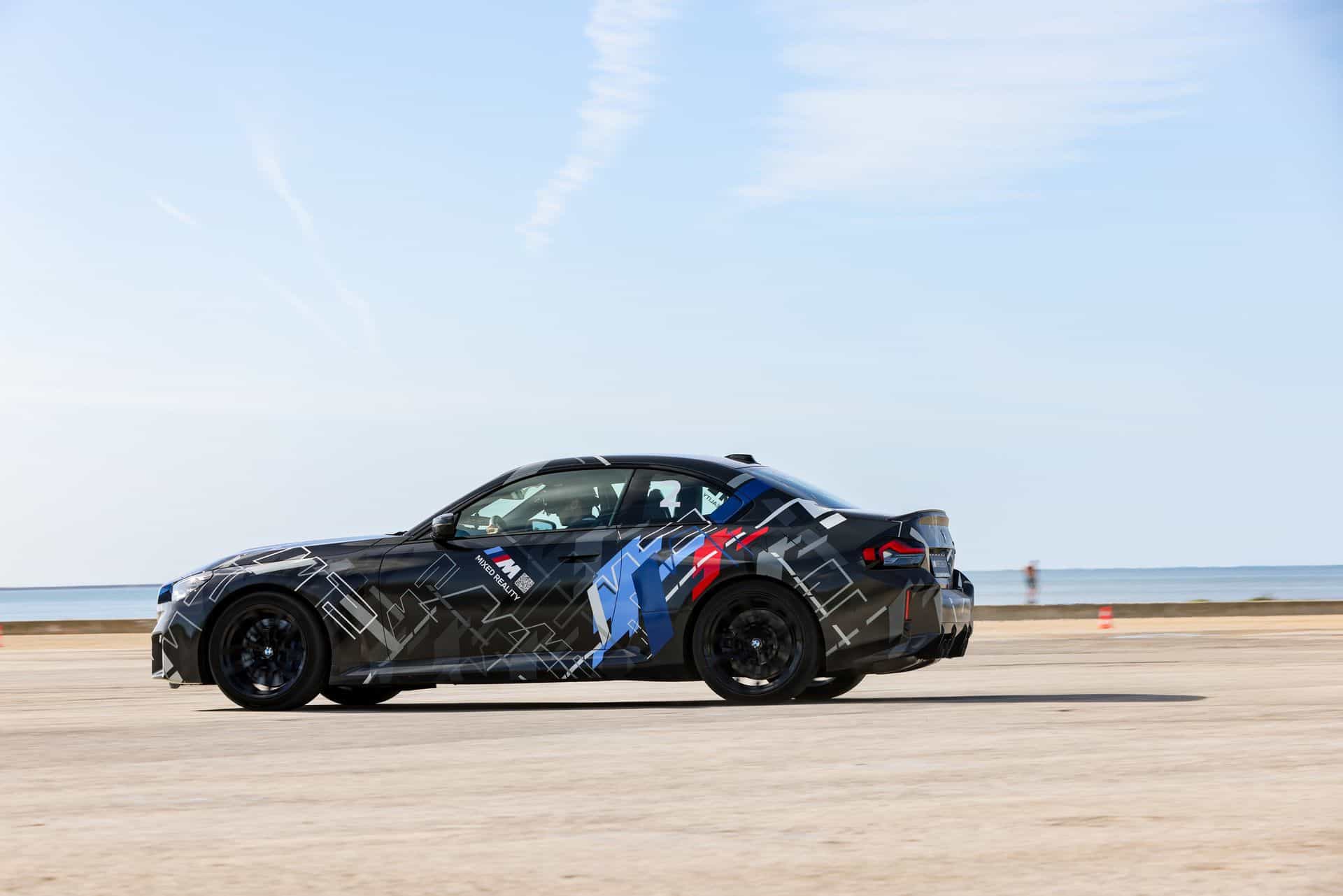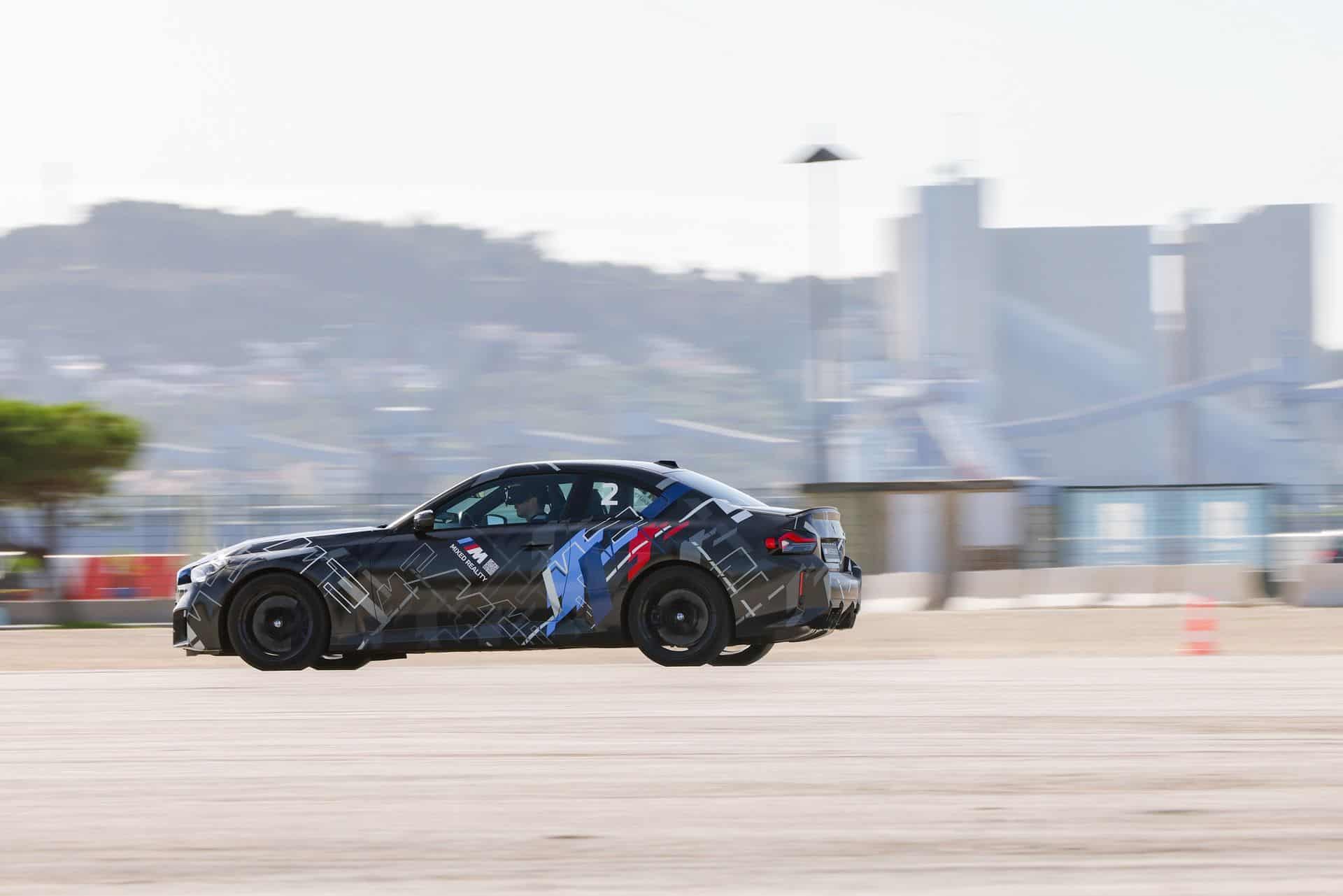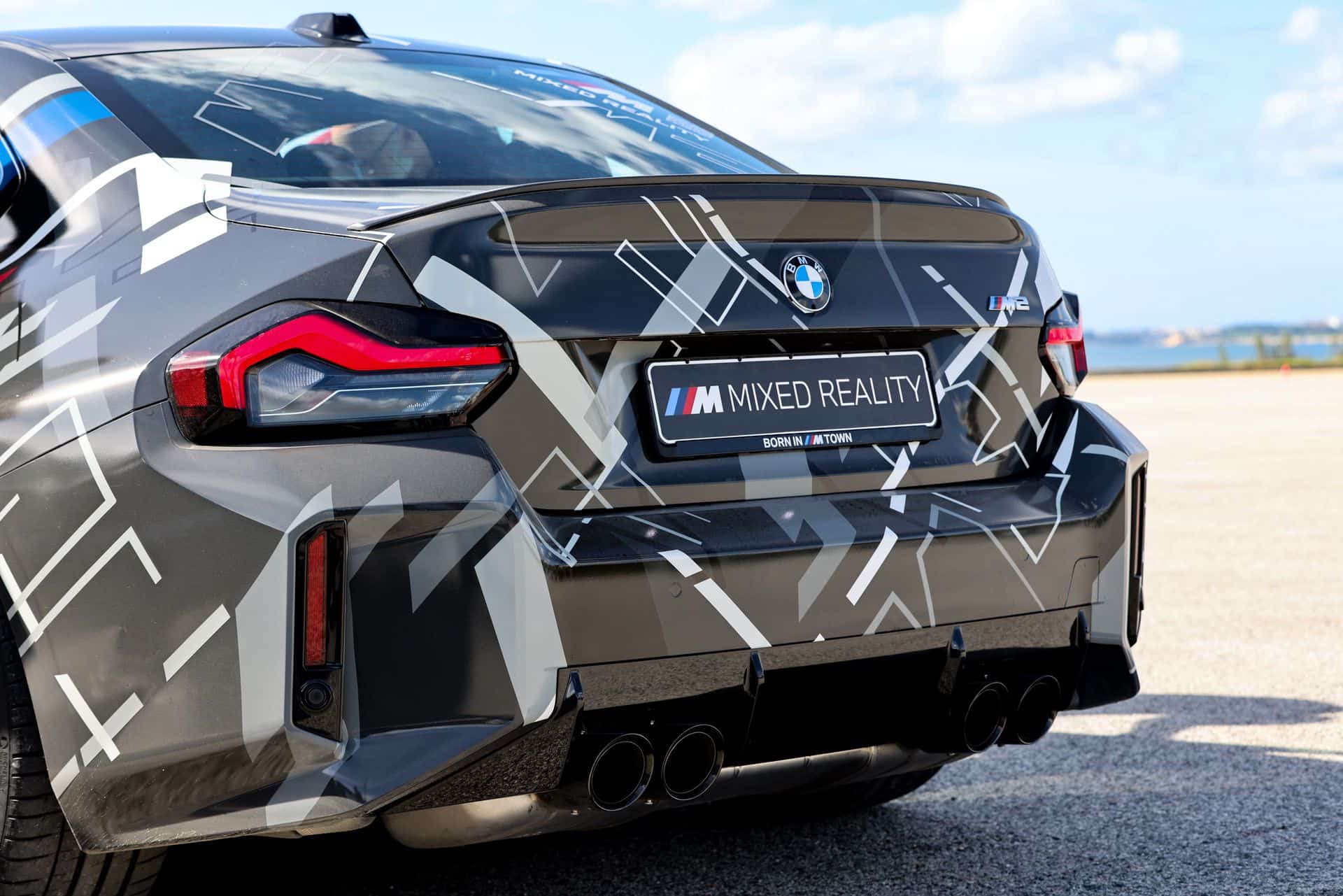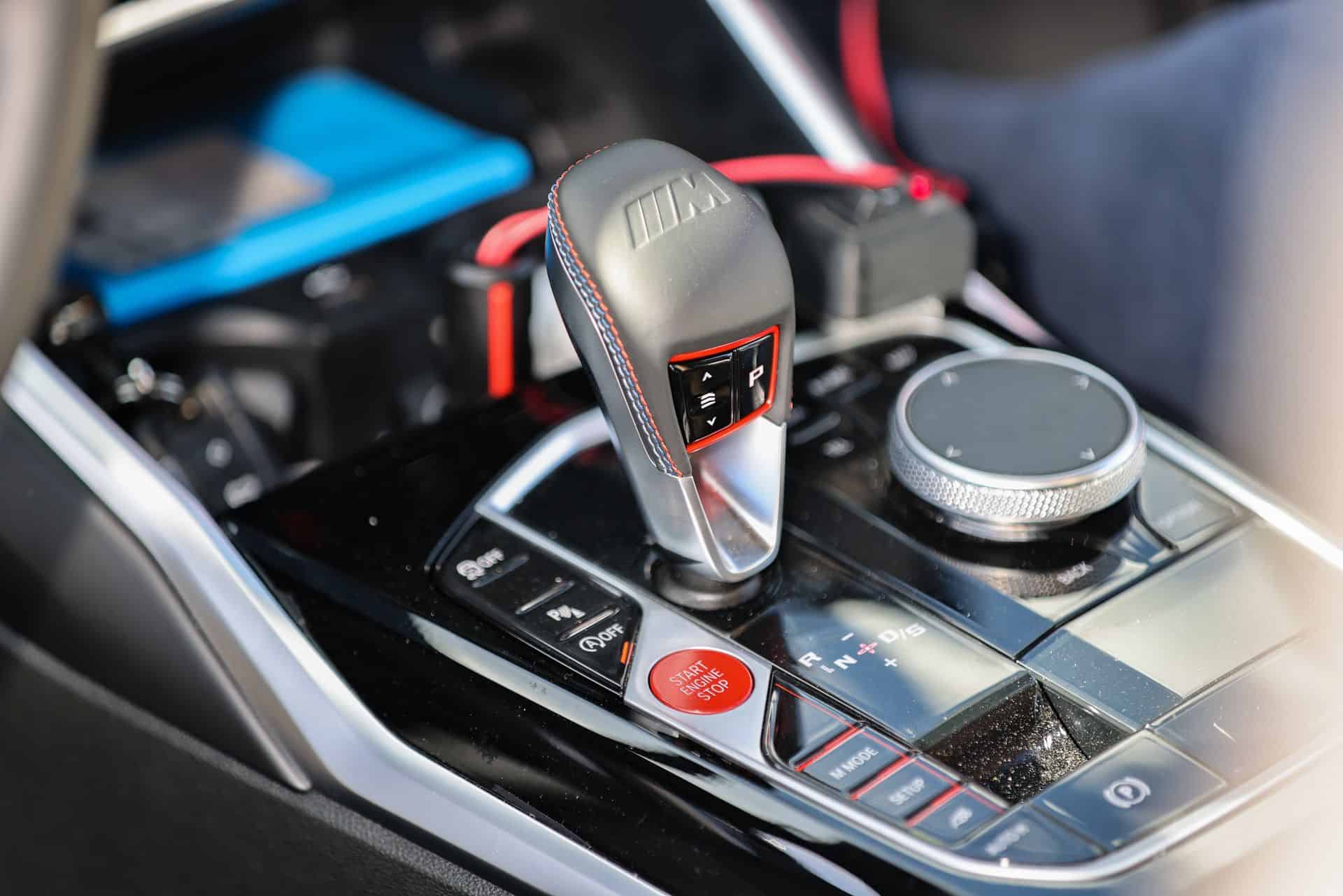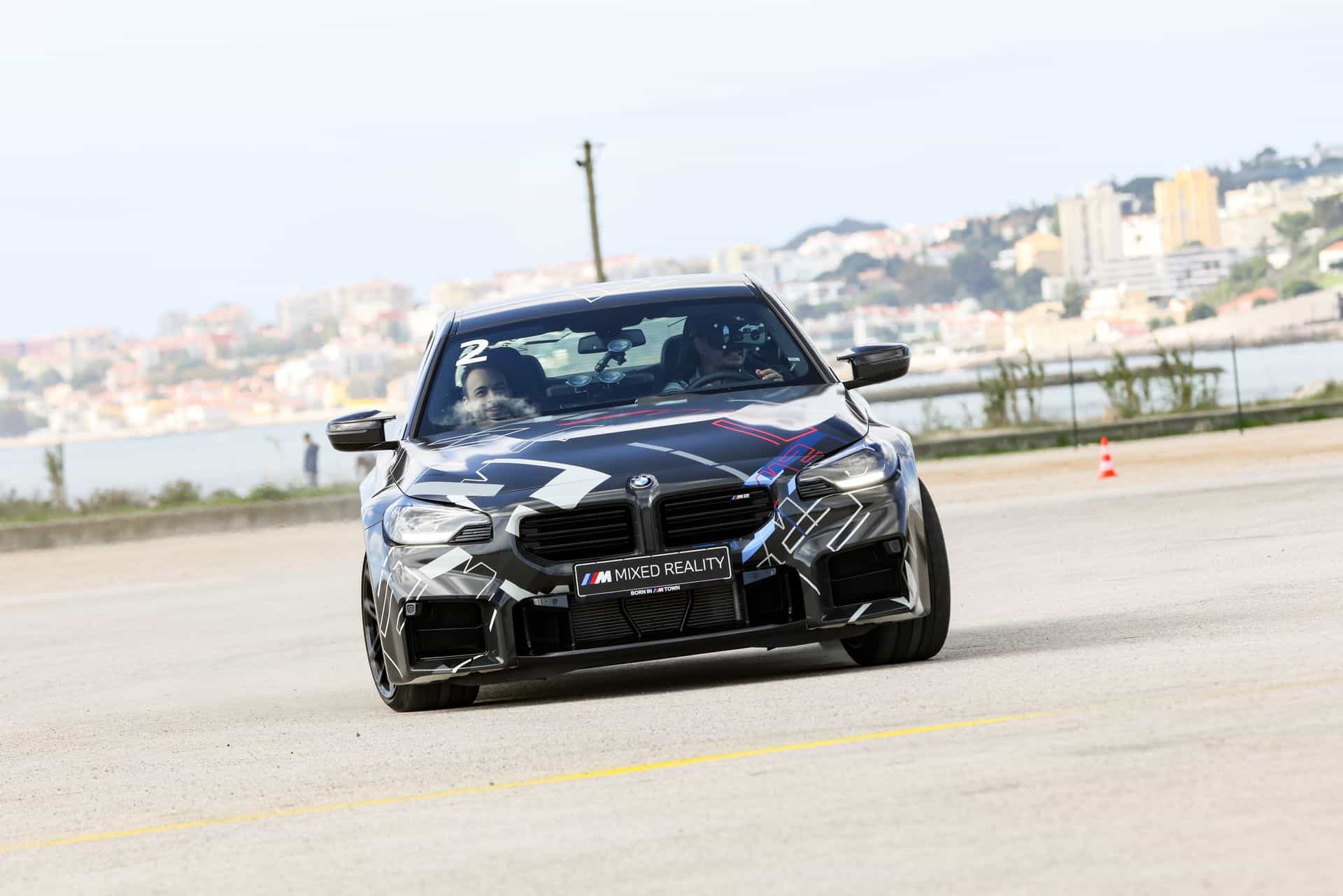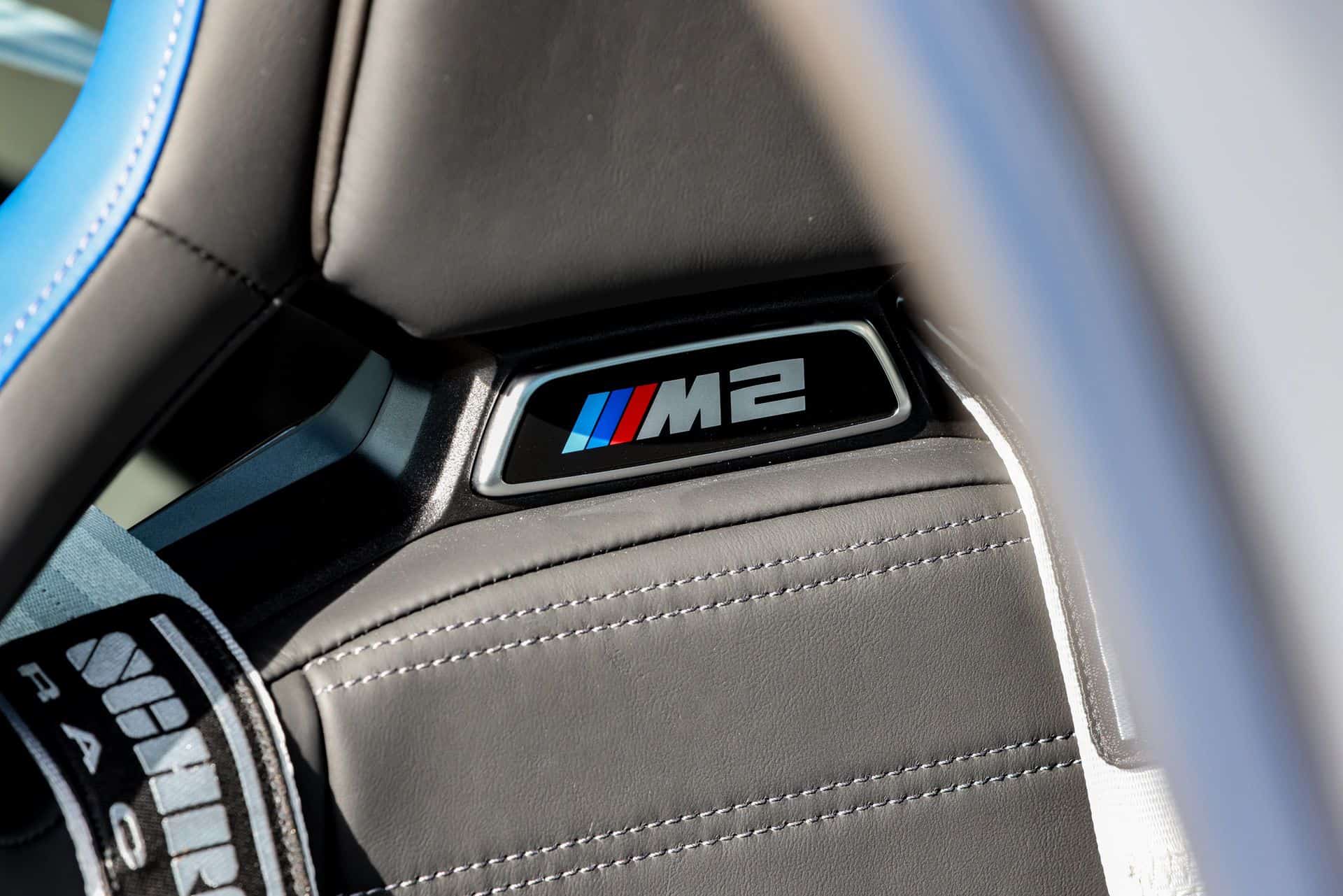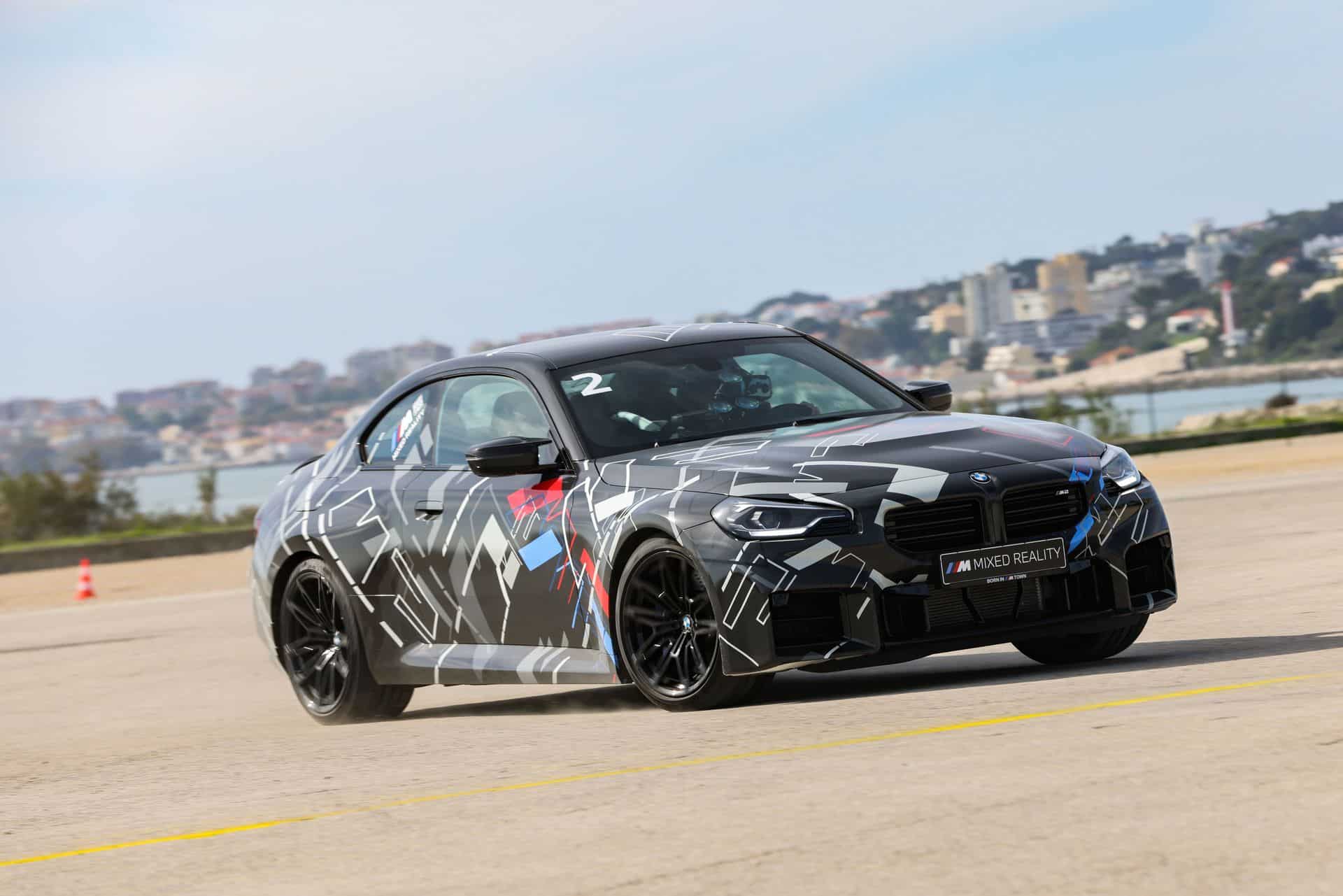BMW just helped create its own Metaverse, so to speak, that’s infinitely more interesting and exciting than just playing Sims with your Facebook friends. The BMW M2 Mixed Reality is one of the strangest, most interesting, exciting, things I’ve ever seen virtual reality do. And we experienced it all from the driver’s seat.
We popped over to Lisbon, Portugal, for the Web Summit 2022, and while on-site, BMW invited us to test their ///M Mixed Reality. The project uses a lot of high-end tech, including a VR headset from Varjo and a Smart Track device from AR-Tracking. The elevator pitch for this is that you sit in the driver’s seat of a BMW M2, while wearing a VR headset, and you actually drive the car. But instead of the real world you’re actually in, you’re seeing a virtual reality world.
Combining Digital and Analog
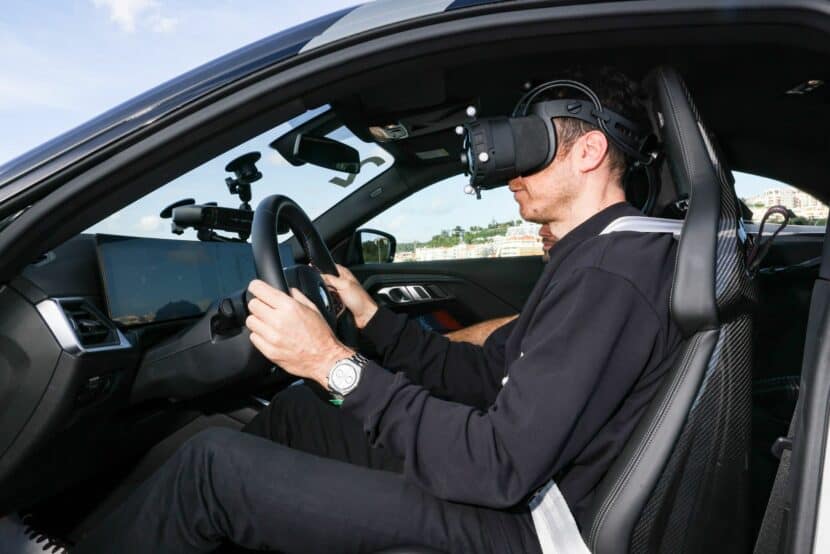
In this new video, you can experience the BMW M2 with a VR headset, on virtual race track, yet in a physical empty parking lot. What we saw through the headset was a digital, futuristic racetrack, like something out of an arcade game. We drove through it, collected Roundel tokens in the track like it was Bavarian Mario Kart, and had to stop in a digital box. In reality, we were actually driving and even sliding the real BMW M2, with a safety engineer in the passenger seat. So in a way, we were immersed in a virtual world physically driving the new G87 M2.
The experience is quite surreal and you are certainly fully immersed into this VR world. The 4K graphics are impressive and the tech is equally exciting. The VR headset adjusts its video quality by tracking where your eyes are looking and there is virtually no distinguishable lag. Of course, that’s partly because there is a consumer-grade gaming PC sitting in the trunk with very short cables connected to the VR headset and the Smart Tracking devices.
High-End VR Headset
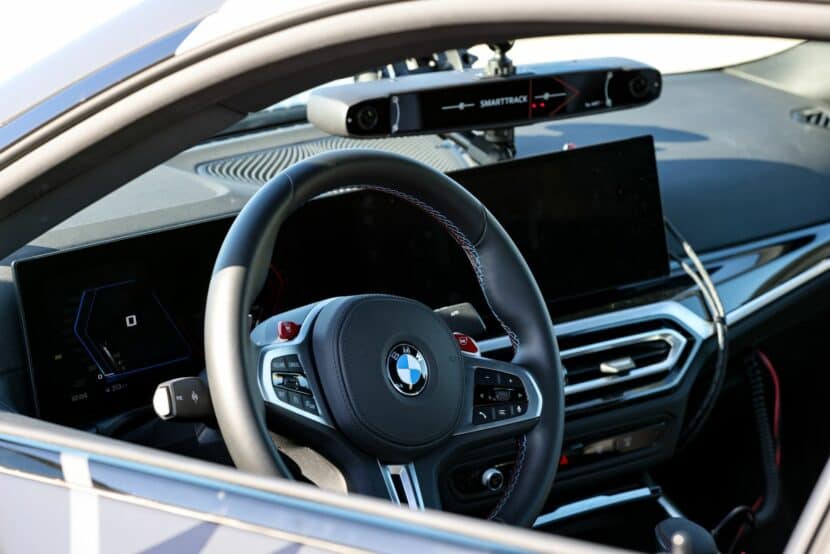
Varjo is the company that makes the headset but Art is the company that makes the tracking bar, which tracks the driver’s head movements. There are countless sensors and GPS tracking, so the system knows exactly what the car is doing, where it’s going, and where it is, so it can safely allow you to drive through a track that’s both digital and physical.
A BMW engineer told us that the Mixed Reality system essentially uses all the “motion” data from the car. So any movement created by the new M2, it’s being captured and used by the MR system.
The driver sees their own real hands, the real steering wheel, and the real dashboard in front of them. However, the passenger side, from the A-pillar back, and the rear of the cabin are all digital to the driver’s VR-covered eyes. And to keep the driver from getting motion sickness, the headset takes in all of the car’s motion, as well as the driver’s inputs, into account, so that the driver can see what they’re physically doing, otherwise they’d get sick.
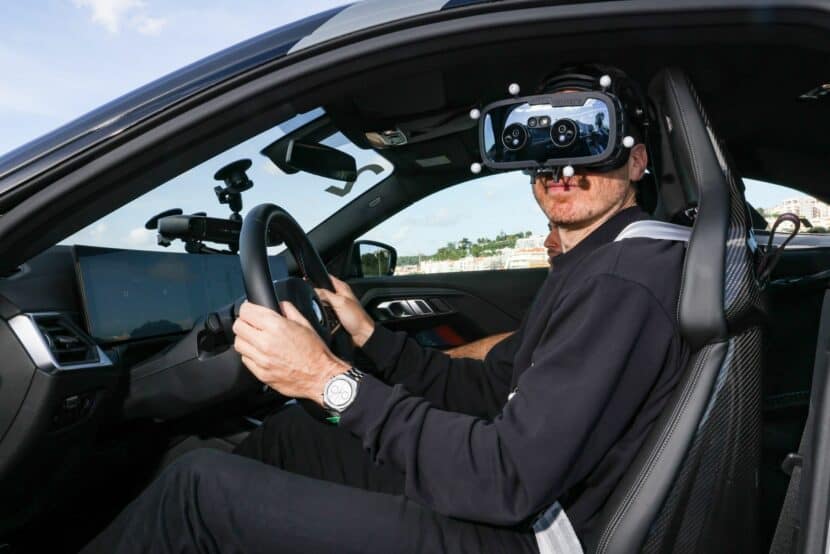
Unique Use Cases
What’s the point of all this? Well, for starters it’s just cool. But there are some interesting applications for mixing the digital and physical worlds while behind the wheel of a car. Imagine testing a car at a dealership for the first time. If they can find a big enough empty parking lot, they can allow the driver to wear this VR headset and test the car on a virtual version of real race tracks, for example. It could be a way to experience real track driving, without actually being at the track.
The whole system runs from a high-end gaming pc in the trunk, packing an NVIDIA 3090 GPU. Just the headset alone costs $6,500 and the rest of the system is far more expensive, so it’s not as if you’re going to see this at your local BMW dealer anytime soon. However, it’s a fascinating, if a bit frightening, technology that could have some interesting applications in the future.


